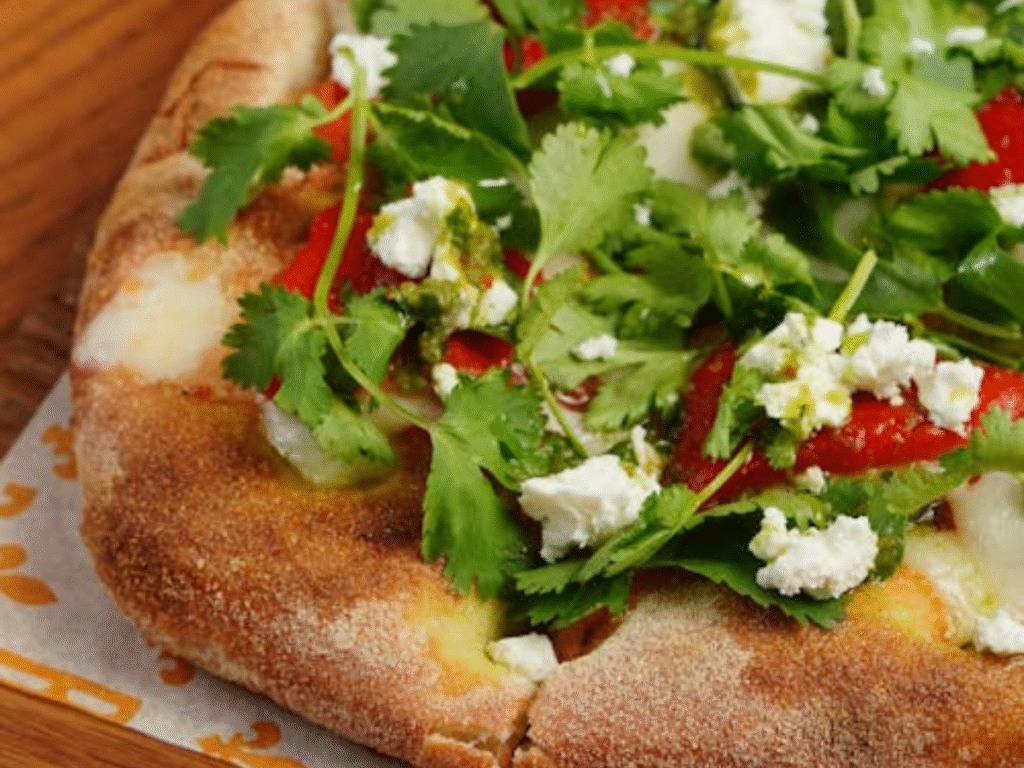
Introduction
Watch this YouTube video tutorial to learn how to make Pinsa Pizza at home.
What is Pinsa Pizza?
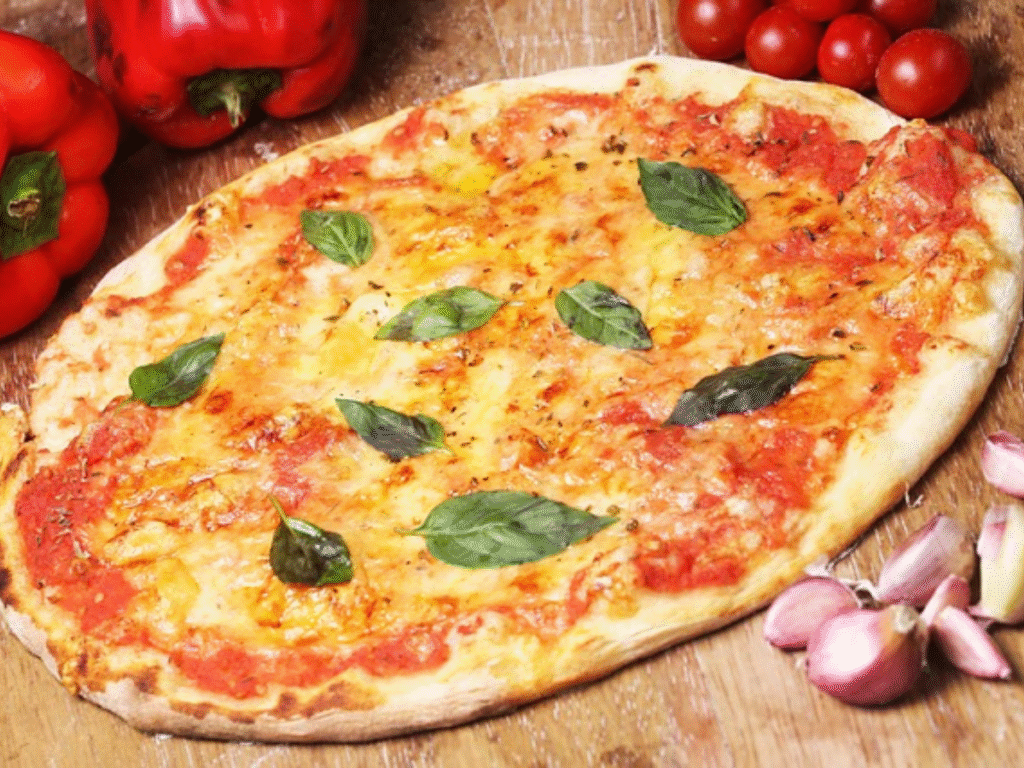
Difference Between Pinsa pizza and Traditional Pizza
Feature | Pinsa Pizza | Traditional Pizza |
Shape | Oval-shaped pizza | Round pie |
Flour Blend | Soy, rice, and wheat | Mostly wheat only |
Fermentation | Long fermentation pizza (72 hours) | Short (few hours) |
Hydration | High hydration dough (80% water) | Lower hydration |
Gluten Content | Gluten-reduced dough | Higher gluten |
Texture | Cloud-like pizza, airy inside, crispy outside | Denser, chewier |
Baking Temperature | Lower, keeps moisture | Higher, crispier finish |
Digestibility | Naturally digestible pizza | Heavier, harder to digest |
Why Pinsa is a Healthier Alternative
Essential Ingredients for Pinsa Pizza
- Rice
- Soy
- Wheat
- Water
- Olive Oil
- Salt
- Tomato
- Mozzarella
- Basil
- Vegetables
- Prosciutto
- Mushrooms
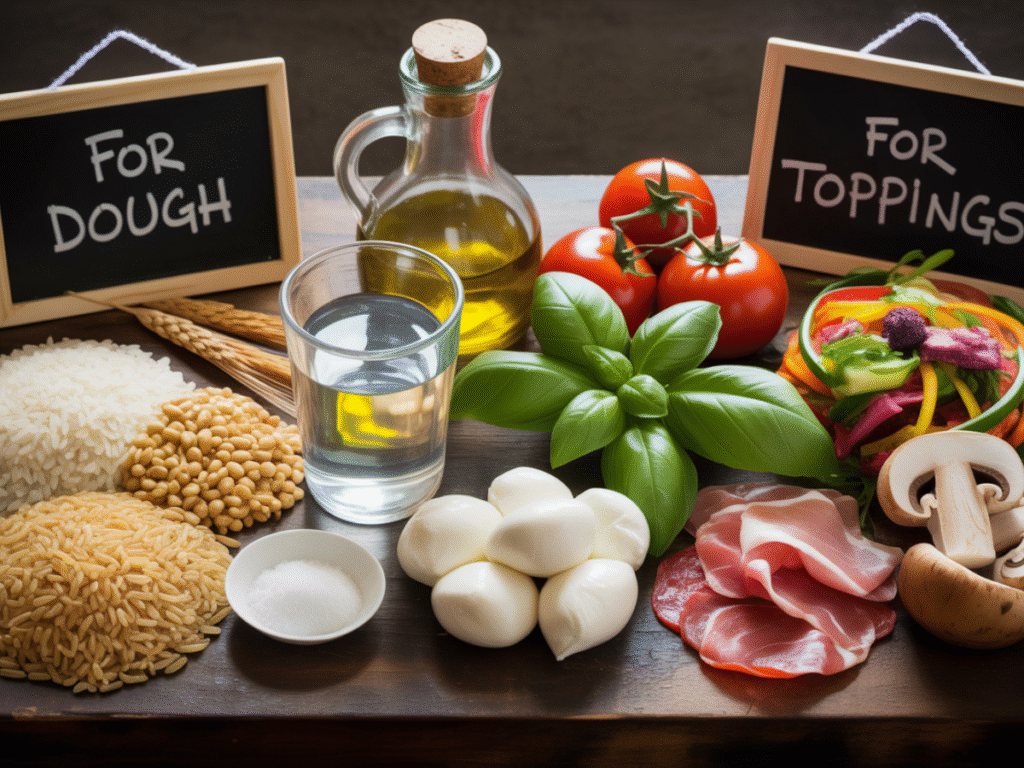
Quick Ingredient Table
Ingredient | Purpose |
Rice flour | Gives crispness |
Soy flour | Adds protein |
Wheat flour | Provides elasticity |
Water (80%) | Makes light pizza dough |
Olive oil | Flavor + softness |
Salt | Balances taste |
Step-by-Step Pinsa Dough Recipe
- Combine soy flour, rice flour, and wheat flour in a large bowl.
- Add yeast, salt, and high hydration dough (80% water) to form a sticky base.
- Mix in a little olive oil to create an elastic olive oil pizza dough.
- Place the dough in the refrigerator for cold fermentation (up to 72 hours).
- Allow the dough to develop flavor and structure during this rest slowly.
- Remove and shape into an oval-shaped pizza base before baking.
How to Make Pinsa Pizza at Home
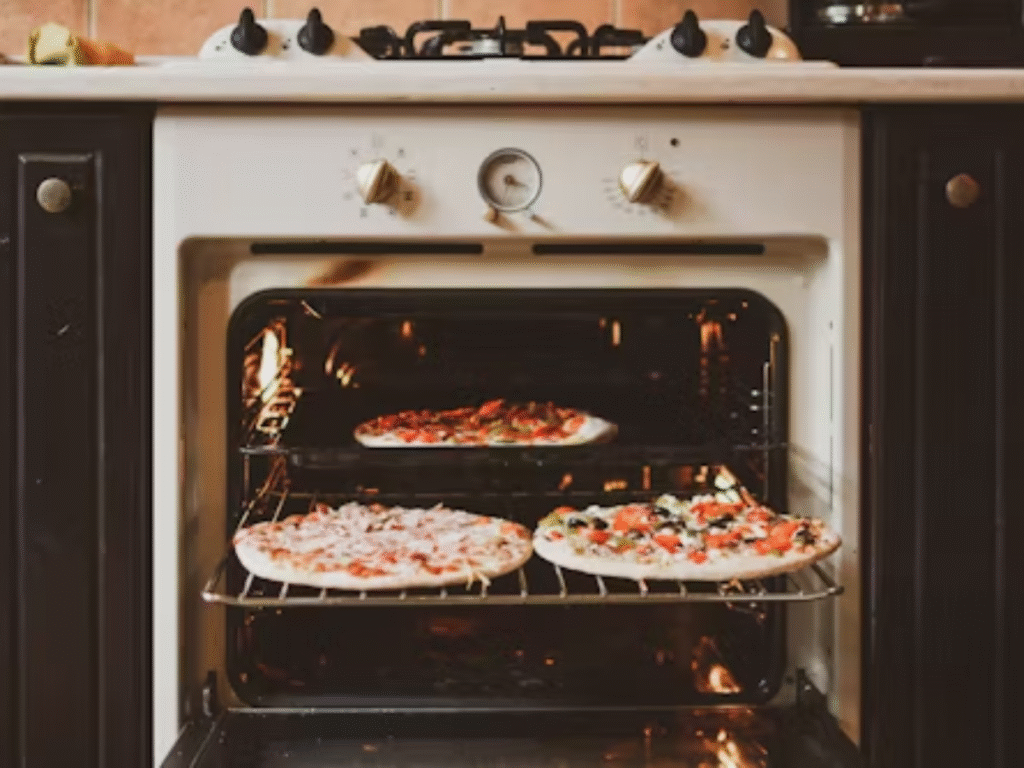
Tips for the Perfect Pinsa pizza
Delicious Variation Ideas
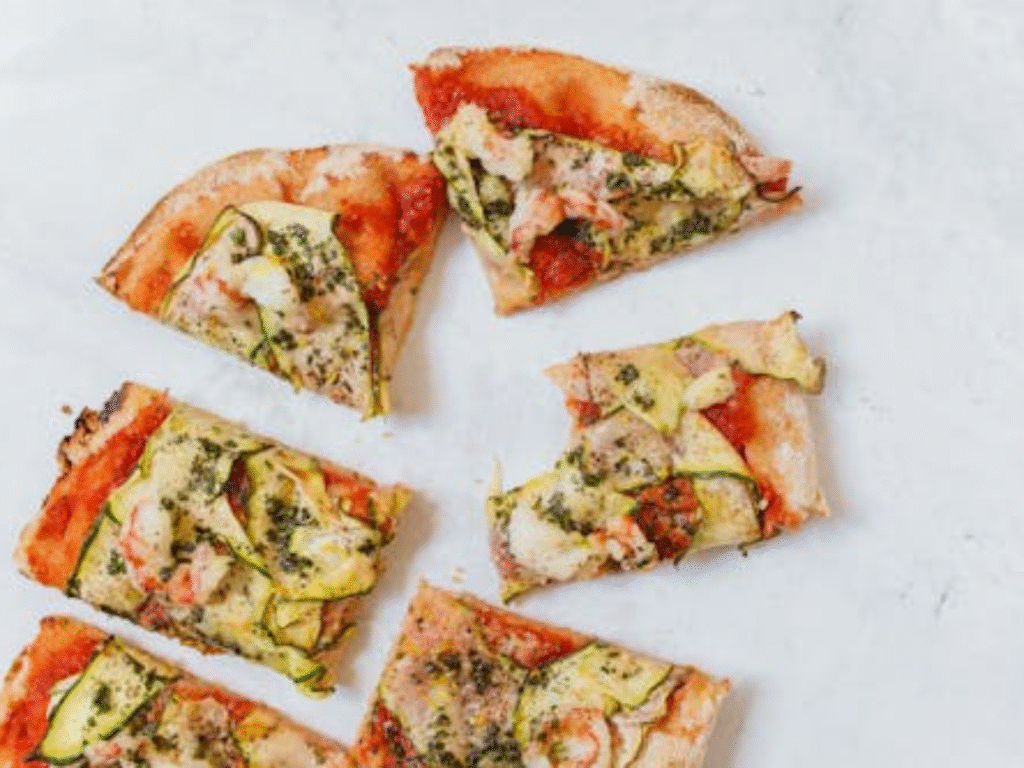
Cultural Significance of Pinsa Pizza
In many ways, pinsa tells the story of pizza evolution/history. The rustic dough, once baked on stones near open fires, laid the foundation for the countless variations of today.
Unlike modern fast food, pinsa preserves the authentic techniques of long fermentation, natural ingredients, and artisanal preparation. Its cultural significance reminds us that food can be both nourishment and heritage.
Serving & Storage Suggestions
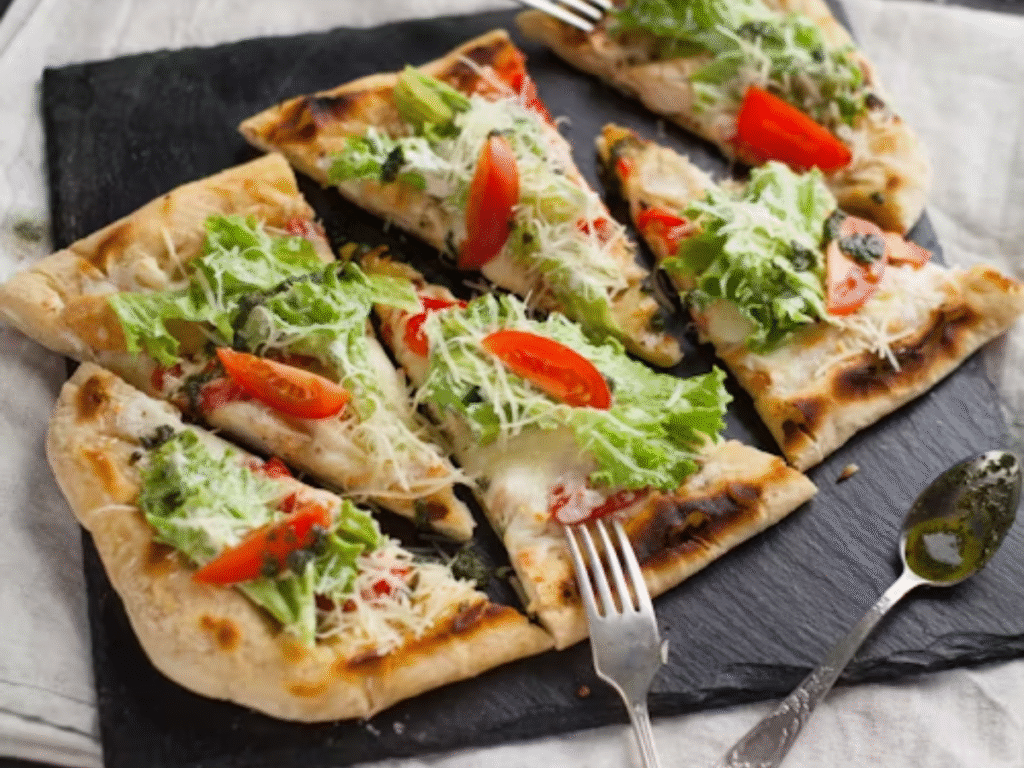
📖 Easy Pinsa Pizza Recipe Card
Step | Instructions | Notes |
1 | Mix rice, soy, and wheat flours with yeast, water, and salt | Keep hydration high |
2 | Add olive oil and knead lightly | Dough will feel sticky |
3 | Refrigerate for 72 hours | Essential for flavor and digestibility |
4 | Shape into an oval and add toppings | Don’t overload the base |
5 | Bake at 450°F until golden | Stone or steel recommended |
Pinsa in the Modern USA Market
Even beyond restaurants, supermarkets, and artisan bakeries are beginning to sell ready-made bases and frozen versions. This expansion introduces naturally digestible pizza to busy households who want a convenient yet nutritious meal.
The modern U.S. market has embraced pinsa not just as a novelty but as a sustainable alternative to heavier crusts. Its rise shows that even in a crowded food scene, authentic quality still wins attention.
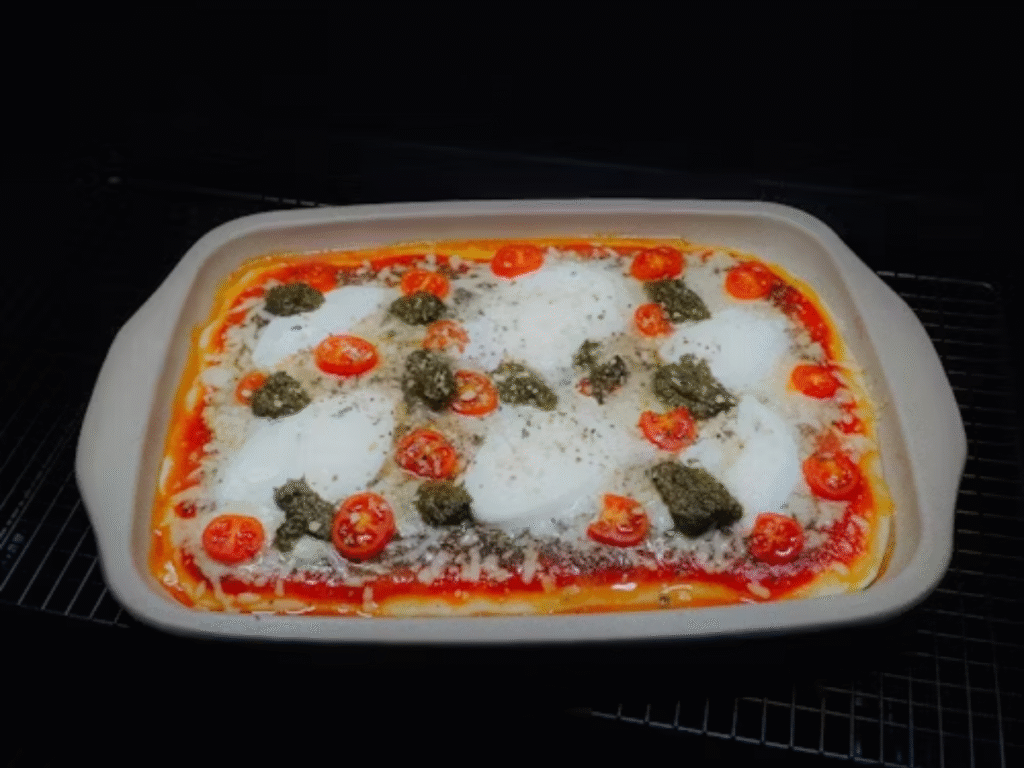
FAQs
